|
 Secure Site
Secure Site
|
 |
Archive for the 'Chime Alarm Clocks' Category
 stillness practice By Sherri Silverman
The Power of Meditation
Meditation and other spiritual practices are basic to enhancing energy—they create balance and improve the quality of your home or office. In fact, the best thing you can do besides building according to Vastu to improve the supportiveness of a space is to do spiritual practices (sadhana). Prayer, meditation, yoga, chanting, and pranayama all enliven a space.
Be consistent with the spiritual practices of whatever tradition you are drawn to. As the Sufi poet Rumi said, your true home is within and reachable by letting go and allowing the mind to go inward. When we feel at home within ourselves and within our own hearts, any building we live in will feel more serene and supportive. Meditation practices make us more perceptive of our environment, so that we intuitively know many of the changes to make. We become more in touch, literally and metaphorically. According to Vastu, the northeast or the center of the home is the best area for meditation rooms, spiritual altars, and yogic practices.
Vastu expert Sherri Silverman, PhD, is the founder of Transcendence Design. This article is adapted fromVastu: Transcenden-tal Home Design in Harmony with Nature by Sherri Silverman. © 2007 by Sherri Silverman. Reprinted with permission of Gibbs Smith.
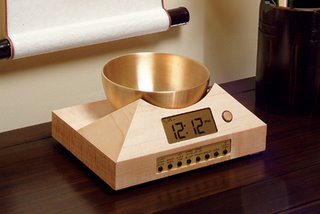 Meditation Tools and Timers with Bowl Gong Now & Zen
1638 Pearl St.
Boulder, CO 80302
(800) 779-6383
Posted in Chime Alarm Clocks, Natural Awakening, nature
 Zen Koans A monk saw a turtle in the garden of Daizui’s monastery and asked the teacher, “All beings cover their bones with flesh and skin. Why does this being cover its flesh and skin with bones?” Master Daizui took off one of his sandals and covered the turtle with it.
–from “Zen Koans” by Venerable Gyomay Kubose
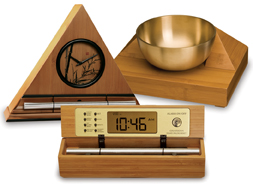 zen meditation timers, gongs, and alarm clocks with chimes
Posted in Chime Alarm Clocks, Now & Zen Alarm Clocks
The alarm clock violently assaults us when we’re helpless. But there are more gentle ways to go from dream-time to waking.
BY: Sarvananda Bluestone
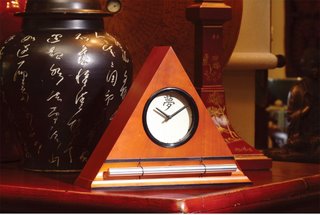 gentle, soothing zen alarm clock How would you feel about waking every day to a siren sounding in your bedroom? Or how about the crashing of cymbals right next to your head? This is the stuff of nightmares. Yet it is not that far removed from most folks’ actual morning experience.
Take alarm clocks. Please. Their very name indicates their primary quality. They frighten, startle, warn, or shock us into wakefulness. And they take several forms. I once had an old-fashioned alarm clock, the kind with two brass bells and a hammer that struck both bells with infuriating speed, creating a metallic cacophony that could wake the dead. There are electric alarms that buzz with ever-increasing loudness. There are radio alarms that blare out early morning news, commercials, or random music. And on and on.
The alarm clock is a form of violence. It jars us at the time when we are most vulnerable and helpless. Sometimes we respond in kind. My childhood friend, Guy, had a collection of guns. When his clanging alarm clock went off one morning, he threw it out the window and shot it with his rifle.
We in the West have been shocking ourselves into wakefulness for a long time. It has not always been like this, however. For thousands of years people have paid more attention to how they awaken and are awakened.
In many cultures, it is believed that the soul travels when we are asleep. Thus, it is very important that the sleeper is brought gently to wakefulness so that his or her soul might find its way back. For traditional peoples around the world, this is a matter of life and death.
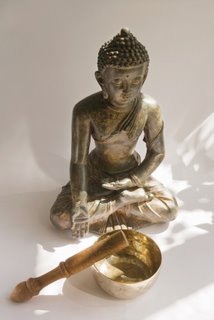 Carved Wooden Thai Buddha with Singing Bowl The Havasupai of the American southwest felt that there was a delicate thread between the night-traveling soul and the body of the dreamer and that any sudden awakening might cut the thread and prevent the soul from returning to the body. The Xingu people of central Brazil similarly aver that sudden waking prevents the soul from returning to the body. In Africa, the Azande and Masai peoples both caution against waking a person suddenly–an aggressive awakening may lead to death. In Japan, too, the Ainu call for waking people slowly to allow the soul and body to reunite, as do the Bororo Indians of Brazil, the Toradja of Sulawesi in Indonesia, and the Andaman Islanders of the Pacific.
Since the method of awakening is so important, many cultures have developed etiquette around it. The Maori of New Zealand consider it a breach of manners to awaken a guest. If, however, it becomes necessary, the host will begin in soft, low tones and increase gradually in volume until the visitor is awake. This gives the spirit time to return to the body. The Kol people of central India and Murngin people Australia follow a similar waking routine.
Of course, we know that people awaken suddenly every day and do not die. But to dismiss the experiences of innumerable other civilizations out of hand would be to miss the point. It is clear that something gets lost when we are awakened sharply and suddenly. It is our dream consciousness that loses its way back to the waking state.
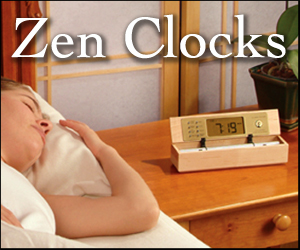 zen alarm clock for a gentle awakening It seems that only in the West do people have difficulty recalling their dreams. Only in the West is there such a thick wall between our dream consciousness and waking consciousness. Part of this is due to the way we, unlike other cultures, undervalue the importance of dream consciousness other than in the psychotherapeutic context. The other reason is that the alarm shocks us out of the dream state and into our rational minds. Our dreams simply don’t have a chance to catch up.
There are, of course, historical reasons for this morning dream death. There is a context to the alarm clock.When the steel and textile mills of the early Industrial Revolution drew in the farmers of the countryside, the clock was the ruler. Time was money. No longer was work driven by the seasons. Instead it was divided into measurable units of time, and the clock became the final arbiter. It was the factory whistle, not the rising of the sun, which moved the people to work. And the alarm clock replaced the rooster.
Our lives today are still dictated by the clock. We don’t even think about it. Train and plane schedules, television and movie programs, restaurant reservations, school, doctor and dentist appointments are all clock-driven.
But what about dream time—that delicate different reality? Dream consciousness is a shy consciousness. It won’t stand being shaken or abused. It simply vanishes.
Alarms are connected with danger and for good reason. They are used in all kinds of disaster situations: burglary, fire, air raid. In their small but significant way, alarm clocks may well have contributed their part to our culture of fear.
Waking Me Softly
There are, however, small islands of hope. Natural and gentle ways of awakening are available and gaining popularity. Intention is the most important ingredient in waking up peacefully. The less we want to get up, the more difficult it will be. But clanging sirens are not the answer. Below are some less alarming possibilities.
Chime Clocks: These quiet, old-fashioned clocks move the sleeper into wakefulness with a softer sound than an alarm buzzer.
Zen Clocks: Gentle Tibetan bell-like chimes strike once, then again 3-1/2 minutes later. The chimes become more frequent over 10 minutes, eventually striking every 5 seconds until you shut it off. They also come in a digital style and in a brass-bowl version with a series of subtle gongs.
 soothing zen alarm clocks by Now & Zen, Inc. Good Morning, Sunshine: Studies by the National Institutes of Health show that waking to light can help people with Seasonal Affective Disorder, certain forms of depression, and sleep disorders. This clock has a built-in light that fades in from zero to full intensity over selected time intervals.
Kids and Pets: For those of us fortunate to have young children or pets in the household, there is a ready-made wake-up service. The hugs of a toddler or nuzzling of a dog are preferable to electronic buzzing. Starting around age three, you might even enlist the child in the service of waking you. You can tell her to shake you gently or speak to you softly or even just to stand there looking at you. If you approach it as a game, the kids are in.
Morning Sounds: In the city or the country, the sounds of the morning world are those that you can anticipate and can help you to awaken softly. Consciously tune in to these. In the country, the birds are the first to welcome the day. And of course, if you live near a rooster, you have a built-in waker-upper. If you live in the city, the sounds of morning are legion—cars and buses rev up, neighbors slam doors, or someone upstairs starts the shower. Learn what these morning sounds are. Select those that are regular and expect them. These are the ones that can serve you daily.
Your Stereo: Most stereo systems can act as timers. Use the CD changer and pick a piece of music that is soothing. Picking a frantic percussion riff or heavy metal cut definitely defeats the purpose. Set the system for the time you want to wake up. Radios aren’t so great for this. We have no idea what’s going to be played. And waking to talk is disconcerting.
 use your inner alarm clock Your Inner Clock: Most of us are so conditioned to the clock that we don’t even need alarm clocks to wake up at a specific time. Here’s how to wean yourself from reliance on the clock.
- Tell yourself that you will wake up before the alarm. You can set your clock, but at bedtime, instruct yourself to wake up before it goes off.
- On a non-working day, try waking without an alarm at all. Just tell yourself that you are going to wake up at a certain time.
- Alternate days. Use an alarm clock every other day. Use your own inner alarm on the other day.
- Keep a record of how you feel on the alarm clock days vs. non-alarm clock days. Any connection between the alarm and getting up on the wrong or right side of the bed?
- Compare how well you remember your dreams on the alarm vs. no-alarm days. Is there any difference at all?
There are probably hundreds, if not thousands, of non-alarming ways to awaken. Perhaps we may someday all move gently from that good night into the world of waking consciousness.
Now & Zen Headquarter Store
1638 Pearl St.
Boulder, CO 80302
(800) 779-6383
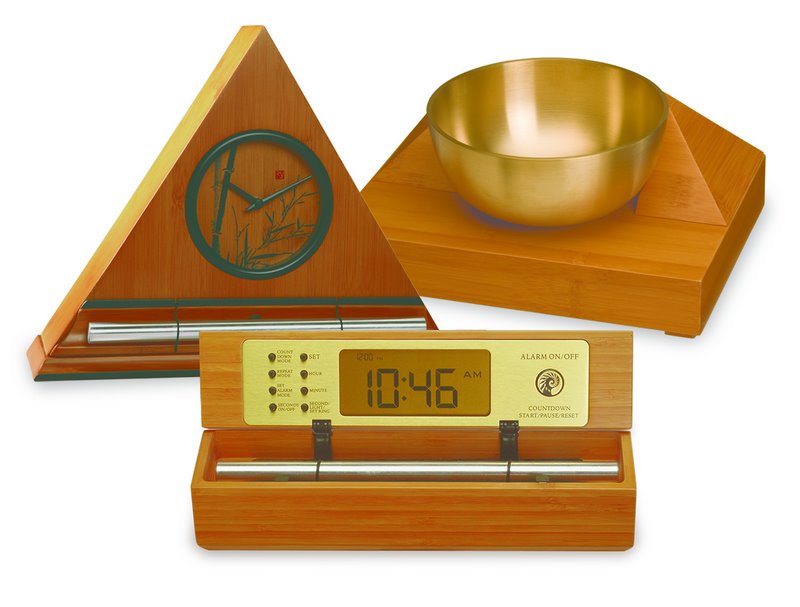 Gentle Alarm Clocks, don't be alarmed!
Posted in Bamboo Chime Clocks, Chime Alarm Clocks, sleep, Sleep Habits
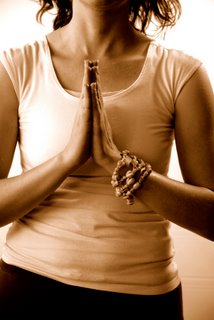 zen clock review from a real Now & Zen customer:
“Hello, I don’t typically do this, but…
I received my digital clock yesterday. I felt it was a bit decadent of me to spend so much for a clock, but I have wanted one for some time and finally can afford it. I just want to say that after waking up so pleasantly this morning, after not wanting to throw my alarm across the room, after smiling as soon as my feet touched the floor (and I am not a morning person), I am certain that your product is worth every cent I put into it. I look forward to using it for yoga and any other reason I can think of to hear its sweet sound.
3 cheers!“
Kari May
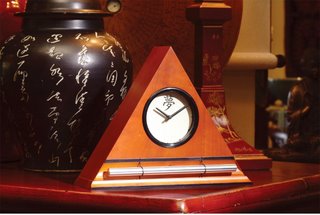 gentle chime clock review Now & Zen Headquarter Store
1638 Pearl Street
Boulder, CO 80302
(800) 779-6383
Posted in Bamboo Chime Clocks, Chime Alarm Clocks
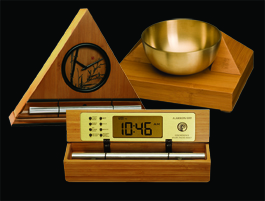 Bamboo Meditation Timer with Elegant, Soothing Chimes Our Zen Timepiece’s acoustic 6-inch brass bowl-gong clock is the world’s ultimate alarm clock, practice timer, and “mindfulness bell.”
It fills your environment with beautifully complex tones whenever it strikes. In the morning, its exquisite sounds summon your consciousness into awakening with a series of subtle gongs that provide an elegant beginning to your day. Once you experience the Zen Timepiece’s progressive awakening, you’ll never want to wake up any other way. It also serves as the perfect meditation timer. Available in 5 wood styles, including bamboo (shown).
If you like the sound of the bar chime on your original or digital Zen Clock, this is the perfect opportunity to upgrade to our bowl-gong clock, which resonates longer and sounds even more complex. The Zen Timepiece also makes for a unique and culturally sophisticated gift.
Our Zen Timepiece’s acoustic 6-inch brass bowl-gong clock is the world’s ultimate alarm clock, practice timer, and “mindfulness bell.” It fills your environment with beautifully complex tones whenever it strikes. In the morning, its exquisite sounds summon your consciousness into awakening with a series of subtle gongs that provide an elegant beginning to your day. Once you experience the Zen Timepiece’s progressive awakening, you’ll never want to wake up any other way. It also serves as the perfect meditation timer. Available in 5 wood styles, including bamboo (shown).
If you like the sound of the bar chime on your original or digital Zen Clock, this is the perfect opportunity to upgrade to our bowl-gong clock, which resonates longer and sounds even more complex. The Zen Timepiece also makes for a unique and culturally sophisticated gift.
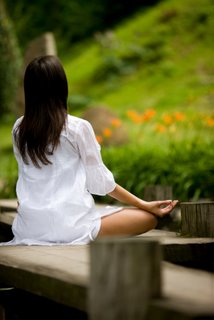 meditation chime timers Now & Zen Headquarter Store
1638 Pearl Street
Boulder, CO 80302
(800) 779-6383
Posted in Bamboo Chime Clocks, Chime Alarm Clocks
 Soothing Chime Alarm Clocks Your body is a temple, so why not wake it respectfully and naturally with the gentle Tibetan bell-like chimes of the Zen alarm clock. Gradually increasing over a 10-minute period, the chimes help ease you out of sleep and into your day. Not just for waking, the rhythm of the chimes is ideal for use during meditation and affirmation, as well as serving as a subtle signal for meeting times. The simple wood shape and lovely Japanese leaf-embellished dial will bring balance and beauty to either bedrooms or offices.
 your body is a temple Now & Zen Headquarter Store
1638 Pearl Street
Boulder, CO 80302
(800) 779-6383
Posted in Chime Alarm Clocks
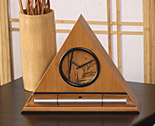 how to design a sacred space Create a personal meditation space that inspires your practice and invokes your higher self.
If you’re a gardener, you know the value of choosing an ideal site and preparing quality soil for nurturing healthy plants. The same is true for tending to your inner growth: when you devote a nook in your home to your practice and sow it with your higher intentions, you create the right conditions for your spiritual life to thrive.
A dedicated space collects and focuses your energy, removes uncertainty about where to practice, and, through habit and association, helps the mind move inward more quickly and deeply. Much like an encounter with the refrigerator conjures thoughts of food, and a glance at the couch invites a comfortable sprawl, catching sight of your meditation seat in a sanctified space will evoke your deepest yearnings and inspire you to do your practice.
Choose a place that can become a sanctuary—a quiet, private space protected from outside distractions and out of public view. You may be fortunate enough to designate an entire room, but a corner in your bedroom will suffice.
You’ll need a meditation seat—traditionally known as your asana—which may be a neatly folded blanket topped by a cushion for support, or even a chair or bench. Keep any additional props needed to support a comfortable sitting posture nearby, as well as your mala, shawl, or journal; but otherwise keep the space uncluttered and scrupulously clean.
A simple altar will serve as the heart of your space, calling you to your practice by providing inspiration and focus. An altar is an acknowledgement of the deeper essence of life and a bridge to the unseen—a link between our life in the world of elements and the subtle world. All altars, even public ones, serve to remind us of meaning and purpose in life, and connect us to inner strength and guidance. In religious or ritual settings, an altar is the locus for offerings made to ancestors or deities. In the context of yoga meditation, an altar inspires an offering of inner resources rather than outward ceremony or ritual, so simplicity is key.
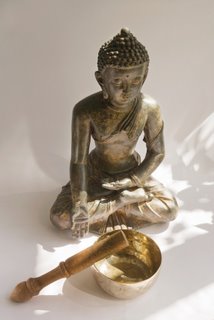 Carved Wooden Thai Buddha with Singing Bowl Try a small low table or a small chest of drawers at eye level, with a tasteful and simple covering. The objects you place upon your altar give focus, substance, and energy to your highest intentions. Traditionally, a flame (from a candle or a ghee lamp), water, flowers, fruit, and incense are offered on an altar to represent the gifts of the world given to us through the five elements. Often, these are joined by objects from a pilgrimage—a stone, sanctified water, or a sacred representation (such as a picture of Our Lady of Guadalupe or a carving of Lord Ganesha). The objects themselves are not as important as whether the altar uplifts the mind and touches the heart.
By creating a sacred space that encourages you to cultivate and nurture a devoted practice, you are one step closer to tasting the fruits of yoga—unconditional well-being and pure awareness.
adapted from Yoga International by, Sandra Anderson / co-author of Yoga: Mastering the Basics and has taught yoga and meditation for over 25 years.
Use our unique “Zen Clock” which functions as a Yoga & Meditation Timer. It features a long-resonating acoustic chime that brings your meditation or yoga session to a gradual close, preserving the environment of stillness while also acting as an effective time signal. Our Yoga Timer & Clock can be programmed to chime at the end of the meditation or yoga session or periodically throughout the session as a kind of sonic yantra. The beauty and functionality of the Zen Clock/Timer makes it a meditation tool that can actually help you “make time” for meditation in your life. Bring yourself back to balance.
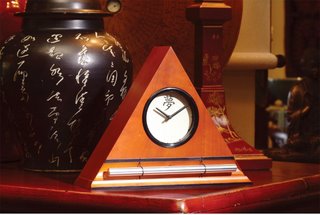 zen alarm clocks and chimes for a gentle awakening Now & Zen – The Zen Meditation Timer Store
1638 Pearl Street
Boulder, CO 80302
(800) 779-6383
Posted in Chime Alarm Clocks, Well-being, Zen Timers
 the link between sleeping and weight Not sleeping enough can do more than make you groggy the next day. It can also take a serious toll on your health—starting with your weight.
In the past several years, medical experts have confirmed a link between lack of sleep and weight problems, and a new study from the University of Chicago and the University of Wisconsin-Madison confirms this. Researchers conducted their study on two groups of overweight people. The first group slept for only five and a half hours each night, and the second group slept for eight and a half hours each night. The study found that while both groups lost weight, those who slept longer burned more fat, while those who slept less burned more muscle mass.
In an interview with NPR, sleep medicine expert Dr. Michael Lacey of the Atlanta Sleep Medicine Clinic explained that lack of sleep not only decreases metabolism, but also interferes with the body’s natural production of the hormones ghrelin and leptin, which regulate appetite and satiation. Too little sleep causes the body to produce too much ghrelin, which makes you feel hungry, and not enough leptin, which makes you feel satiated or full. Staying awake longer than you should will make you feel hungry when you’re really not, and will lead you to eat at times you normally wouldn’t. The longer you stay awake, the more tempted you’ll be to snack, too. To make matters worse, most people staying awake too long reach for high-carb or sugary foods, which they’re unlikely to burn off in the wee hours of the night.
Getting enough sleep will help your body burn fat and regulate weight. But how much is the right amount to get? Most sleep experts pinpoint seven to seven and a half hours as the magic sleep number. Sleep fewer than seven hours and you run the risk of fatigue and weight problems. Sleep too much and you put yourself at risk for cardiovascular disease.
adapted from Natural Home Magazine, October 2010 by Susan Melgren
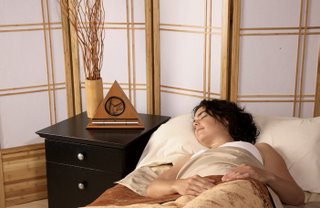 gentle alarm clock, for a slow wake-up
Now & Zen
1638 Pearl Street
Boulder, CO 80302
(800) 779-6383
Posted in Chime Alarm Clocks, sleep, Sleep Habits, wake up alarm clock, Well-being, Zen Alarm Clock
 yoga child's pose Get a group of friends together and take dancing, rock climbing, or tai chi lessons once a week.
adapted from Body + Soul
 Chime Alarm Clock, a Natural Sound Alarm Clock
Now & Zen
1638 Pearl Street
Boulder, CO 80302
(800) 779-6383
Posted in Chime Alarm Clocks
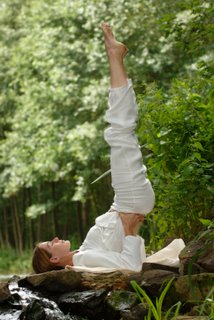 yoga lying down A harmonizing practice for people in recovery
As you practice the following sequence, remember to honor your limitations, going to your edge with love and acceptance rather than judgment and discouragement. If you are unable to move into a posture at this time, focus on breath-ing deeply as you think about the affirmation—that in itself is healing. At the end of the routine, take some time to write down your thoughts.
Legs-up-the-Wall Pose Viparita Karani
Benefits Relaxes the legs and feet by relieving pressure.
Affirmation As I relax, I gain insight, clarity, and ease.
Sit on the floor next to a wall, with your knees bent and your left hip and side barely touching the wall. Using your hands for support, slowly lie back and swivel your hips so that you can slide both legs up the wall and your buttocks press against it. You can let your arms relax either at your sides or on your belly.
Straighten your legs. (If you have tight hamstrings, bend your knees or move your buttocks farther away from the wall.) Hold the pose and breathe. You can place a pillow under your head or lower back for more support.
adapted from Yoga Journal by Annalisa Cunningham, author of Healing Addiction with Yoga
 Meditation Timers and Chime Clocks Now & Zen
1638 Pearl Street
Boulder, CO 80302
(800) 779-6383
Posted in Chime Alarm Clocks, yoga, Yoga Timer, Yoga Timers by Now & Zen
« Previous Page — « Previous Entries
Next Entries » — Next Page »
|
|
|
|